Army Day: April 6th
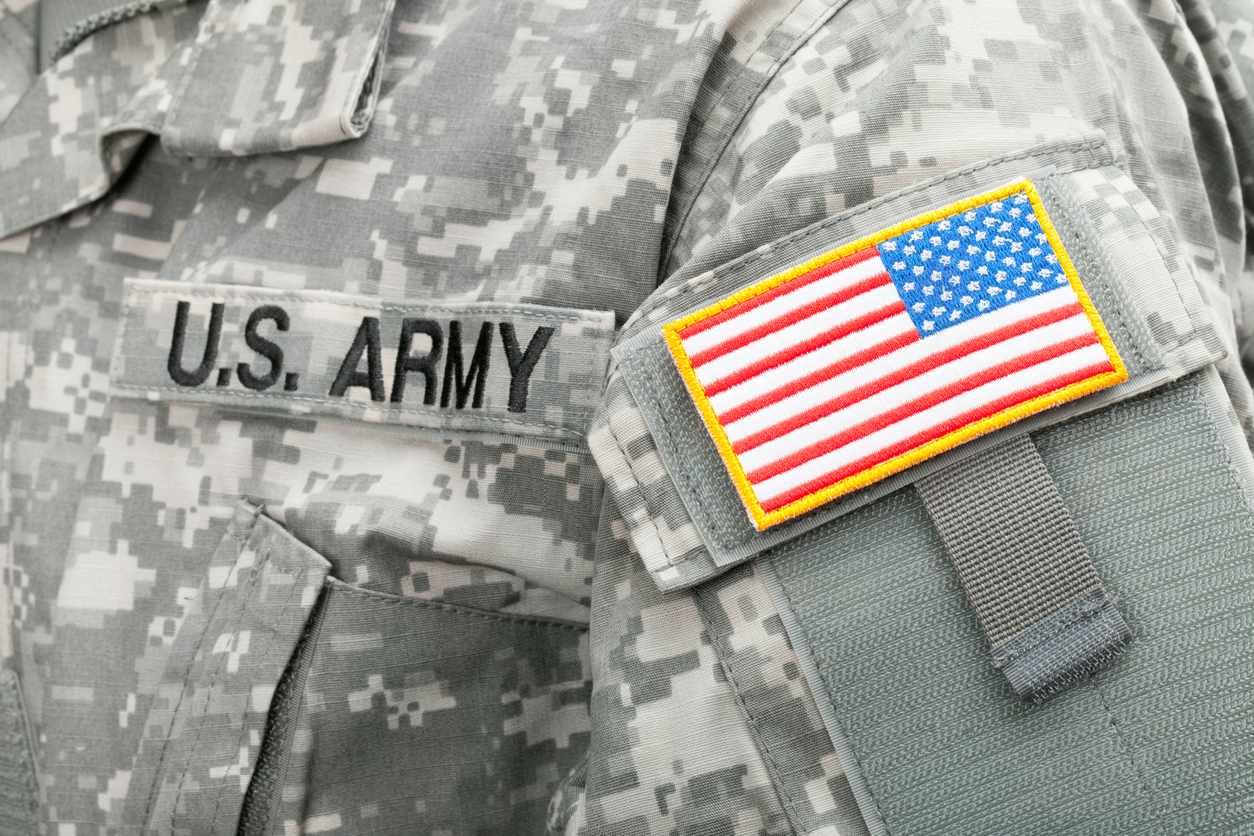 Not to be confused with the Army’s birthday, which is celebrated on June 14th, Army Day traces its origins to the little known Defense Test Day celebrated in 1924 and 1925. After Congress disallowed any further observances of this day, Colonel Thatcher Luquer established Army Day to be celebrated on May 1, 1929 in hopes of dampening Communists' celebration of Workers' Day, which is celebrate on the same day. After its initial celebration, Army Day was moved to April 6th, the anniversary date of the United States' entry into World War I.
Not to be confused with the Army’s birthday, which is celebrated on June 14th, Army Day traces its origins to the little known Defense Test Day celebrated in 1924 and 1925. After Congress disallowed any further observances of this day, Colonel Thatcher Luquer established Army Day to be celebrated on May 1, 1929 in hopes of dampening Communists' celebration of Workers' Day, which is celebrate on the same day. After its initial celebration, Army Day was moved to April 6th, the anniversary date of the United States' entry into World War I.
Army Day was established as an observance to draw public attention to national defense as well as to acquaint the public with Army activities. Additionally, the day was used to stress the need for military preparedness, which at the time, the nation had lacked as it entered earlier major conflicts. On April 4, 1936, President Franklin Delano Roosevelt issued a proclamation stating that Army Day be recognized by Congress as April 6th and observed nationwide. Later on March 1, 1937, Congress passed Resolution #5-75 which officially recognized Army Day.
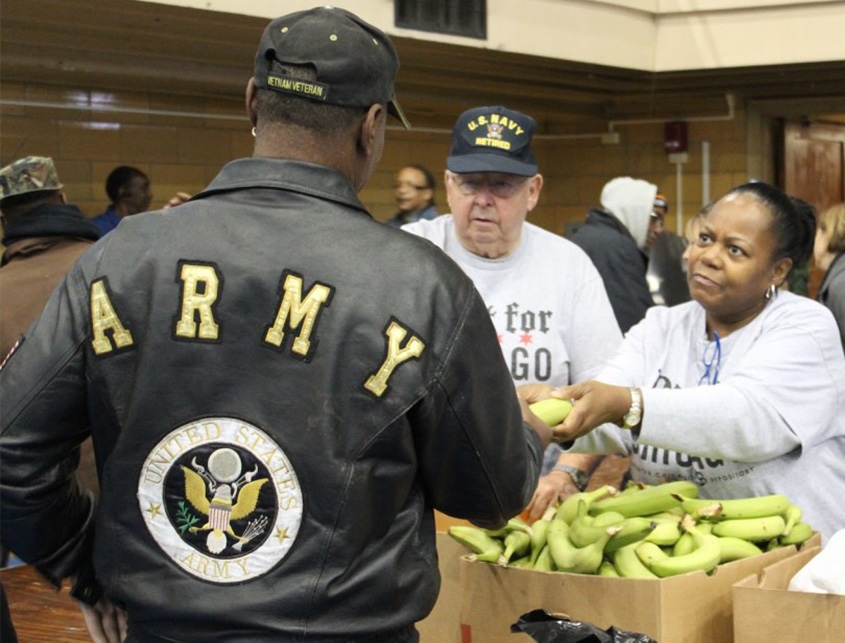 Army Day is best celebrated by doing your part to remind our veterans that their sacrifices are appreciated. Remember that everything they do helps us live the lives of peace and security that we experience daily. Volunteering at homeless shelters is a great way of ensuring that veterans that need our help the most get it. Unfortunately, it is a fact that a disturbing number our veterans fall through the cracks after they return home from their service. Army Day is your chance to help make a difference in the lives of people who gave everything to make a difference in yours.
Army Day is best celebrated by doing your part to remind our veterans that their sacrifices are appreciated. Remember that everything they do helps us live the lives of peace and security that we experience daily. Volunteering at homeless shelters is a great way of ensuring that veterans that need our help the most get it. Unfortunately, it is a fact that a disturbing number our veterans fall through the cracks after they return home from their service. Army Day is your chance to help make a difference in the lives of people who gave everything to make a difference in yours.
How Veterans Day replaced Armistice Day in America
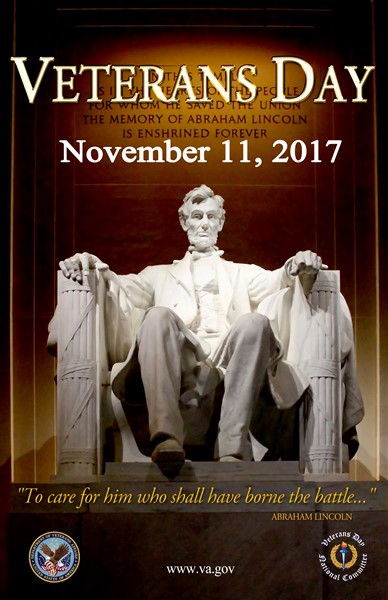
Americans have long remembered those who served our country in uniform in the United States Armed Forces on November 11, first as Armistice Day and now as Veterans Day. This year, November 11 marks the 99th year of commemorating veterans in the United States who served their country honorably during war or peacetime. Did you know that Veterans Day is a U.S. federal holiday that was first Armistice Day?
In 1918, on the 11th hour of the 11th day of the 11th month, an armistice agreement was established between the Allied nations and Germany in World War I as a temporary cease fire and war time peace. The Treaty of Versailles in 1919 officially ended “The Great War,” however, the armistice date of November 11, 1918, remained in the public image as the date that marked the end of the conflict. Commemorated in many countries as Armistice Day the following year, the day’s observation is commemorated with thanksgiving and prayer as well as exercises designed to perpetuate peach through good will and mutual understanding between nations. Armistice Day also included parades and public gatherings, as well as a brief pause in business and school activities at 11:00 a.m.
An act in 1938 made November 11 “Armistice Day” – dedicated to the cause of world peace but also to recognize the country’s service members and gratitude for victory. Years later, Armistice Day became legally known as Veterans Day in 1954 after lobbying efforts by veterans’ organizations. The 83rd U.S. Congress amended the 1938 act that had made Armistice Day a holiday, striking the word “Armistice” in favor of “Veterans.” From this date forth, November 11 became a day to honor the heroism of American veterans of all wars and peacetime. The Veterans Day National Ceremony is also held every year on November 11th at Arlington National Cemetery. An official wreath-laying ceremony is observed at the Tomb of the Unknown Soldier at 11:00 a.m. and continues inside the Memorial Amphitheater with a parade of colors by veterans’ organizations and remarks from dignitaries in conjunction with parades and other celebrations held throughout the country.
Currently, there are more than 22 million veterans living in the United States. American effort during World War II utilized the greatest mobilization of U.S. Army, Navy, Marines and Air Force in the nation’s history with more than 16 million people and created many veterans. A common misunderstanding about Veterans Day is that it gets confused with Memorial Day, according to the U.S. Department of Veterans Affairs. Memorial Day honors American service members who died in service to their country or injuries incurred during battle, while Veterans Day pays tribute to American veterans living and dead who served their country humbly during conflict and peace. If November 11 falls on weekend, the federal government observes the holiday on the previous Friday or following Monday. Veterans Day continues to be observed on November 11 regardless of what day of the week on which it falls. Let us be reminded of the purpose of Veterans Day this year, a day of gratitude in honor of America’s brave veterans who have put patriotism and willingness to serve and sacrifice before their own needs for the common good of our country.
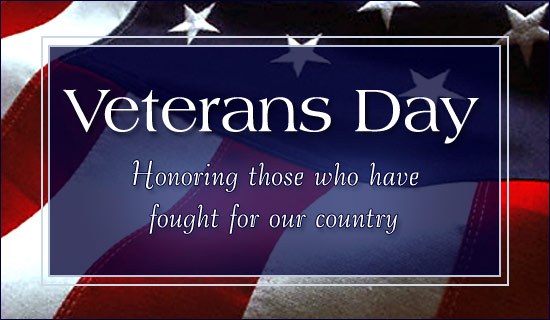
Firefighters Memorial Day Service is held at the National Firefighters Memorial
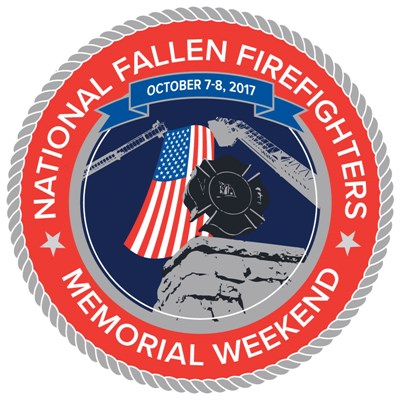
Fire and Emergency Services are considered one of the most dangerous jobs in the United States. Putting their lives on the line while responding to million’s of emergency calls annually without hesitation and with little regard for their personal safety. Over a million men and women comprise the American fire and emergency services and the unsettling truth is that approximately 100 or more personnel die annually in the line of duty. The brave men and women who have died in the line of duty are honored for their bravery and sacrifices on National Firefighters Memorial Day.
Every year in October, America honors fallen fire heroes on Firefighters Memorial Day and thousands attend a National Memorial Service at the National Fallen Firefighters Memorial. Located in Emmitsburg, Maryland, the site was conceived as a tribute to American fire service members and later congress officially designated the site as the National Memorial for career and volunteer fallen firefighters. Former President George W. Bush mandated public law 107-51, requiring the American flag to be flown at half-staff on all federal and state buildings to memorialize fallen firefighters and in conjunction with observance of the National Fallen Firefighters Memorial Service.
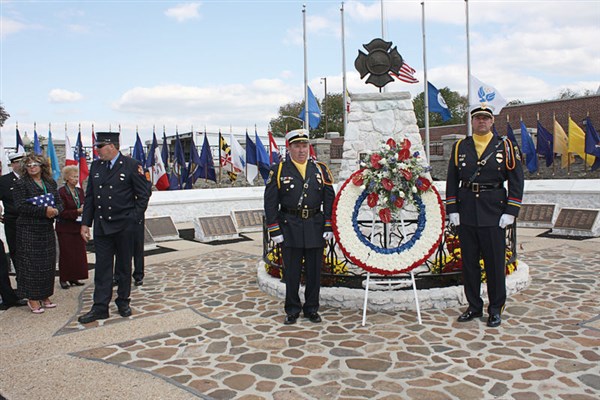 The monument was constructed in 1981 on the campus of the National Fire Academy and features a 7-foot sculpted Maltese cross, the universal symbol of fire service and also the badge of firefighters. At the base of the moment there is an external flame symbolizing the spirit of all firefighters of past, present, and future. A Wall of Honor is around the monument with names dating back to 1981 to commemorate the fallen and each year a new engraved plaque that encircles the monument plaza is also added with the names of the fallen from the previous year. A brick “Walk of Honor,” from the monument site takes you on a beautiful tour of the National Fire Academy and ending at the Historic National Fall Firefighters Memorial Chapel. The ceremony includes the placing of a Presidential Wreath at the monument. The memorial service is also a time to pay respect to the fire and emergency services men and women for their dedication and sacrifices to keep our families and communities safe. Also a dedication of a plaque honoring those who died in the line of duty during the previous year is presented.
The monument was constructed in 1981 on the campus of the National Fire Academy and features a 7-foot sculpted Maltese cross, the universal symbol of fire service and also the badge of firefighters. At the base of the moment there is an external flame symbolizing the spirit of all firefighters of past, present, and future. A Wall of Honor is around the monument with names dating back to 1981 to commemorate the fallen and each year a new engraved plaque that encircles the monument plaza is also added with the names of the fallen from the previous year. A brick “Walk of Honor,” from the monument site takes you on a beautiful tour of the National Fire Academy and ending at the Historic National Fall Firefighters Memorial Chapel. The ceremony includes the placing of a Presidential Wreath at the monument. The memorial service is also a time to pay respect to the fire and emergency services men and women for their dedication and sacrifices to keep our families and communities safe. Also a dedication of a plaque honoring those who died in the line of duty during the previous year is presented.
Whenever a firefighter dies in the line of duty, local fire officials notify the United States Fire Administration and a notice is immediately posted on the Memorial grounds. The American flag is also lowered to half-staff at the site in honor of the fallen firefighter. The memorial is open year round to the public. We encourage you to spread the word to your local communities to lower the American flag at your homes and businesses. Take a moment to consider the sacrifices of the brave men and women who have fallen in the line and duty from natural and man-made emergencies or disasters. Also recognize the active fire and emergency service members who continue to protect and serve our families and communities.
(See US Flag Supply's Fallen Service Honor Flags - Thin Red Line American Flag)
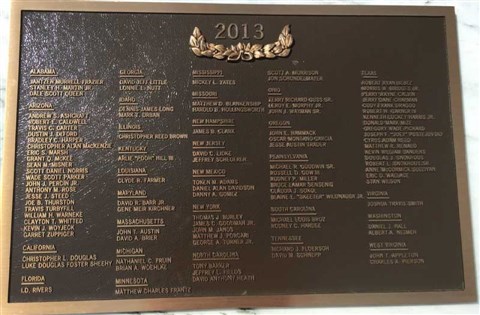
Congress Officially Creates the United States Army
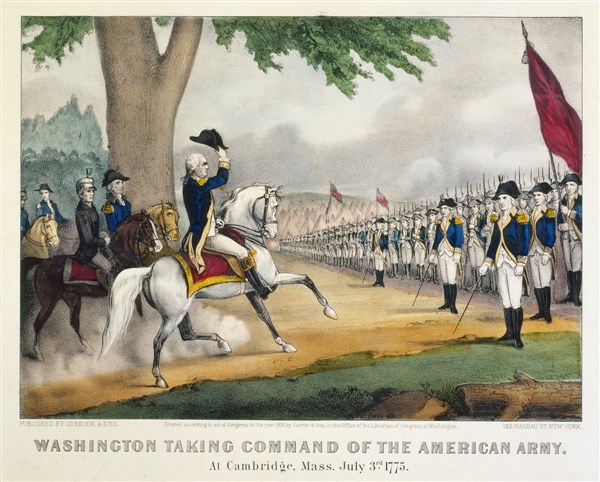 To what may have seemed like a technicality, the United States Army was not official until September 29, 1789 after President George Washington succeeded in getting the First Congress to officially recognize the U.S. Army under terms of our newly formed Constitution. The Revolutionary War first birthed a version of the Army under Washington on June 14, 1775 as the Continental Congress felt it was needed in the conflict with Great Britain. The first version of the Army operated with state militias on the fight for independence. After the Articles of Confederation were finally ratified in 1781, the ability to raise troops for the common defense of the United States and also allowed for individual states to declare war under certain conditions.
To what may have seemed like a technicality, the United States Army was not official until September 29, 1789 after President George Washington succeeded in getting the First Congress to officially recognize the U.S. Army under terms of our newly formed Constitution. The Revolutionary War first birthed a version of the Army under Washington on June 14, 1775 as the Continental Congress felt it was needed in the conflict with Great Britain. The first version of the Army operated with state militias on the fight for independence. After the Articles of Confederation were finally ratified in 1781, the ability to raise troops for the common defense of the United States and also allowed for individual states to declare war under certain conditions.With these new provisions, there were concerns about the need for a standing army outside of times of war. For most Americans after the Revolution, a standing army was a dangerous threat to liberty and the newly independent country. Many of the drafters of the Constitution had the experience serving with the Continental Line, the army the bested the British for our independence. George Washington, Alexander Hamilton, and James Madison were acutely aware the dangers an external enemies posed to the newly formed nation. The “raise and support Armies” clause was the solution to the dilemma.
The Constitutional convention of 1787 in Philadelphia accepted the new for a standing army but sought to maintain control by checks, permitting the President to command it but Congress would be to finance it using short-term legislation. Congress had the power to do this under the Army Clause. “The Congress shall have Power To…raise and support Armies, but no Appropriation of Money to that Use shall be for a longer Term than two years...,” the clause read.
After President Washington continue to insist that the lawmakers pass an Act clarifying the Army’s role under the new Constitution. “I am particularly anxious it should receive an early attention as circumstances will admit; because it is now in our power to avail ourselves of the military knowledge disseminated throughout the several States by means of the many well instructed Officers and soldiers of the late Army; a resource which is daily diminishing by deaths and other causes,” Washington wrote. Congress finally passed an Act for the “Establishment of the Troops,” also allowing for the President to order up state militias under some circumstances and even required a loyalty oath to the Constitution by anyone in service.
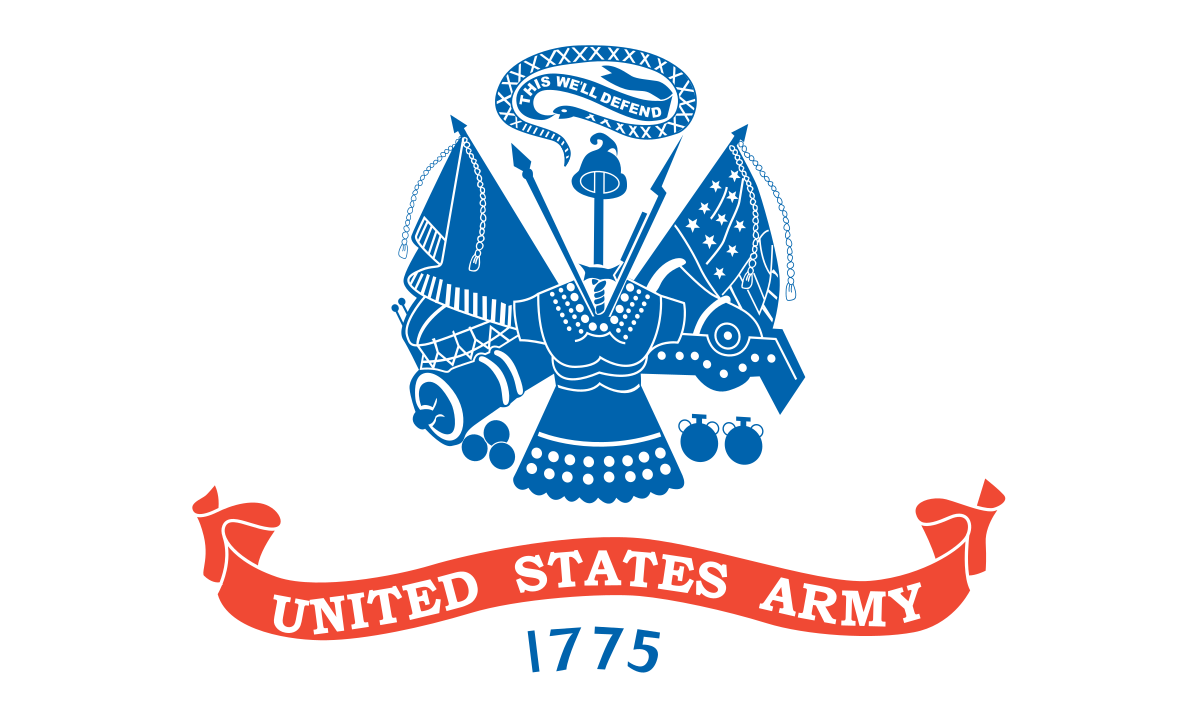
International Day of Peace: Together for Peace, Respect, Safety, and Dignity for All

Every year the International Day of Peace is observed around the world on the September 21. The General Assembly of the United Nations has declared this a day devoted to peace and cease fire within and among all nations and peoples. This year’s theme is “Together for Peace: Respect, Safety, and Dignity for All.” The theme was designated to honor the spirit of TOGETHER, a global initiative that promotes respect, safety, and dignity for refugee forced to flee their homes and everyone leaving in search for a better life.
TOGETHER unites the organizations of the United Nations and its 19 Member States, the private sector, academic institutions, civil society, and individual citizens in a worldwide partnership of diversity, non discrimination and acceptance of refugees and migrants.
“In times of insecurity, communities that look different become convenient scapegoats,” said United Nations Secretary-General António Guterres. “We must resist cynical efforts to divide communities and portray neighbors as ‘the other’. Discrimination diminishes us all. It prevents people — and societies — from achieving their full potential.” He added, “Together, let us stand up against bigotry and for human rights. Together, let us build bridges. Together, let us transform fear into hope.”
The International Day of Peace primary focus this year has been engaging and mobilizing people throughout the world to show support for refuges and migrants. The message has been shared to communities hosting refugees and migrants as well as people and communities concerned that refugees and migrants may bring harm or physical and economic insecurity to their lives. The International Day of Peace highlights solidarity with refugees and migrants and showcases the benefits of opening up communities and nations to migration and the possible economic growth. Also the Day is aimed at acknowledging legitimate concerns of host communities, ultimately the day is about bring people TOGETHER and reminding them of the common good of humanity. Peace is the right and desire of all people. TOGETHER let’s bring more peace and acceptance into our lives and communities.
American Airmen, Breaking Barriers Since 1947
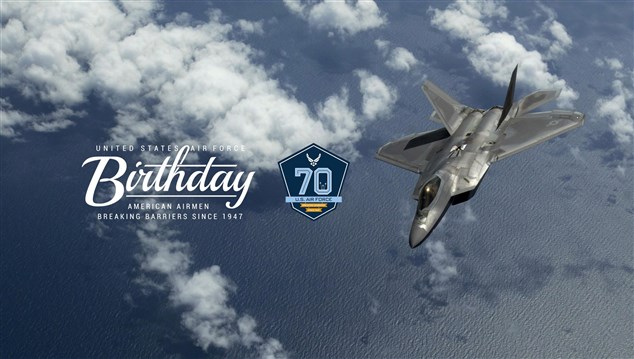
Happy birthday to 70 years of airpower and innovation to the Airmen of United States Air Force. Since 1947, the mission of the Air Force has been to Fly, Fight, and Win in air, space, and cyberspace. With aim to remain elite through a rich history and clear vision, Airmen pursue their mission with excellence and integrity to become leaders, innovators, and warriors. This credence has allowed the U.S. Air Force to consistently break barriers. The first decade of their existence helped showcase barriers the Air Force has overcome and positioned them for a lifetime of supreme success in the air, on the ground, and at the sea.
On October 14, 1947, Chuck Yeager piloted the rocket propelled Bell Aircraft XS-1 through the sound barrier – propelling the Force’s future in air superiority. That breakthrough helped establish the understanding and importance of velocity while also ensuring humans and aircraft frames could operate at high speeds. The battle for air superiority was berthed and the end of propeller-driven fighters was becoming eminent with the emerging jet aircraft. This became very clear that prop planes was a thing of the past after losing the advantage in the sky to North Korea at the start of the Korean War in 1951, vastly due to the superior MiG-15 aircraft. Air Force responded with the F-86 Sabre, which was similar in speed and maneuverability to the MiG but had a better gun platform.
In the infancy of Air Force history, nuclear challenges began to rise as concerns for nuclear weapons was now a possible threat. Secretary of Defense Charles Wilson assigned the task of developing intercontinental ballistic missiles to the Air Force in 1956. The service responded swiftly, activating their first ICBM within a year’s time. The first launch of the Atlas ICBM was less than a month later and was able to travel 500 miles, effectively hitting its target. Years later on September 9, 1959, a newer and more improved Atlas ICBM was fired from Vandenberg Air Force Base and traveled 4,300 miles declaring its operation effective and also established the ground component of the nuclear triad.
The Air Force changed the way the world thought of military personnel and led the charge in the acceptance of diversity within the Armed Forces. Making their branch of service the first to plan for racial integration before former President Truman’s executive order desegregated the U.S. military. The new service also saw great importance in breaking the gender barrier, being the first branch to allow women in the Air Force.
It is safe to say that the first decade in Air Force history helped establish their heritage of innovation, teamwork, and breaking barriers. The milestones they reached in a short duration since their creation is remarkable. We want to wish the U.S. Air Force another 70 years of innovation, teamwork, and breaking barriers!
The story behind the flag on National POW/MIA Recognition Day
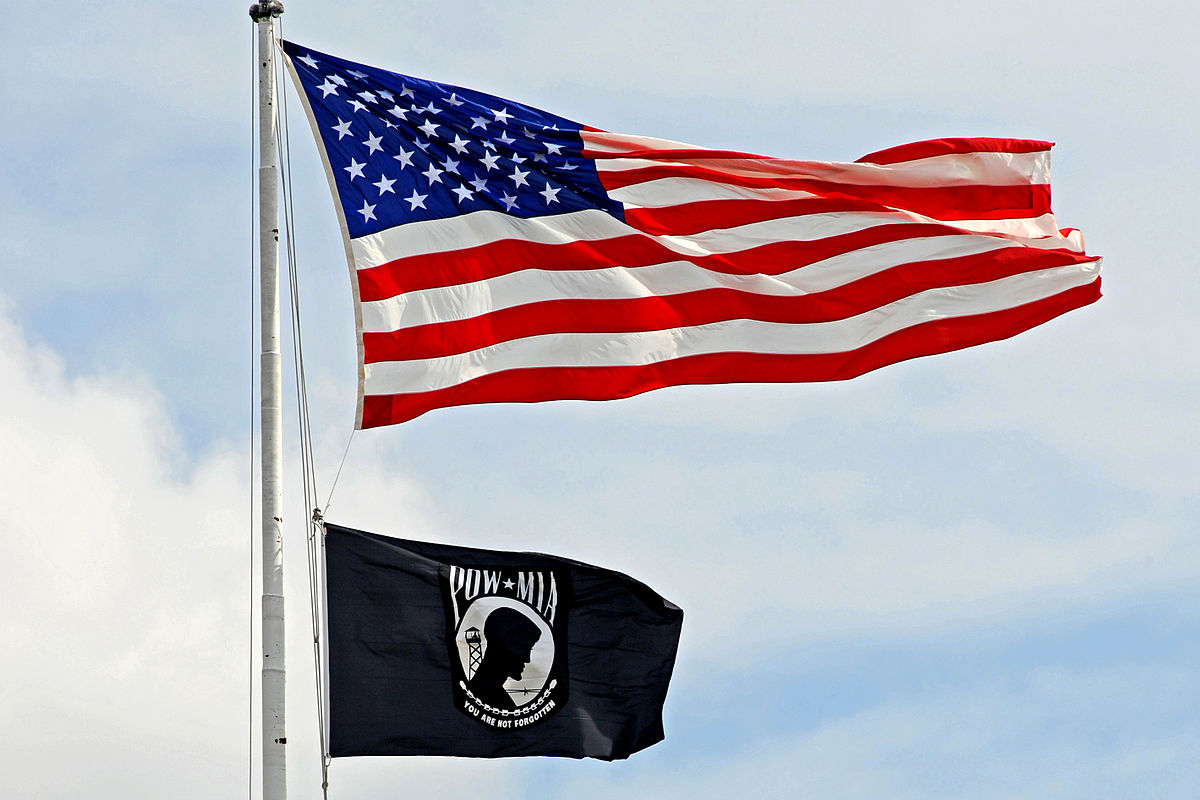
National POW/MIA Recognition Day may be today and many Americans are accustomed to seeing the now familiar flag – the silhouette with white letters on a black background flying outside of courthouses, military properties, post offices, hospitals, and government buildings all year round. What is less familiar is the people who created the flag and their inspiration.
The creator of the flag who gets credit for coming up with the idea is Mary Hoff of Orange Park, Florida. Her husband, Navy Commander Michael Hoff was shot down during the Vietnam War in a flight over Laos in 1970 leaving his body unaccounted for. The pain and uncertainty left Mrs. Hoff questioning Washington, “What do I bury?” according to a statement she made to the Florida Times-Union. In response she was told that she could have all the artifacts from the shot down aircraft. With consideration for other families in her shoes who needed something more ceremonious, she reached out to Annin Flagmakers after reading an article in the Jacksonville, Florida Times-Union about Annin designing and manufacturing flags for the newer UN members. Her intentions were to create a flag that fellow members of the National League of Families of American Prisoners and Missing could be proud of and something more personable.
After reaching out to Annin, Mrs. Hoff was able to make contact with the Vice President of sales Norman Rivkees. He in turn contacted a local graphic designer by the name of Newt Heisley to design a flag that would represent the group. The job became personal for both Mrs. Hoff and Newt who happened to be a World War II veteran who flew missions in the Pacific. “I used to fly within range of the Japanese and wondered how I would hold up if I ever got captured,” Newt once said. The now familiar slogan, “You are not forgotten”, was born of that thought. He ultimately based the silhouette profile of the flag off of his son who was just returning home after becoming ill in Marine training. Mrs. Hoff claims the color scheme was her idea with the idea of not wanting a lot of colors. “I had seen a picture of one of those POWs wearing black-and-with pajamas” and because of that she said, “We need a stark, black-and-white flag.” Just like that, what was meant to be a flag intended for a small group of people became a national widespread appeal. So widespread that, “The distinction, historians and flag experts believe, of being the only non-national flag that any federal government anywhere in the world has mandated to be flown regularly according to Marc Leepson, author of Flag: An American Biography.
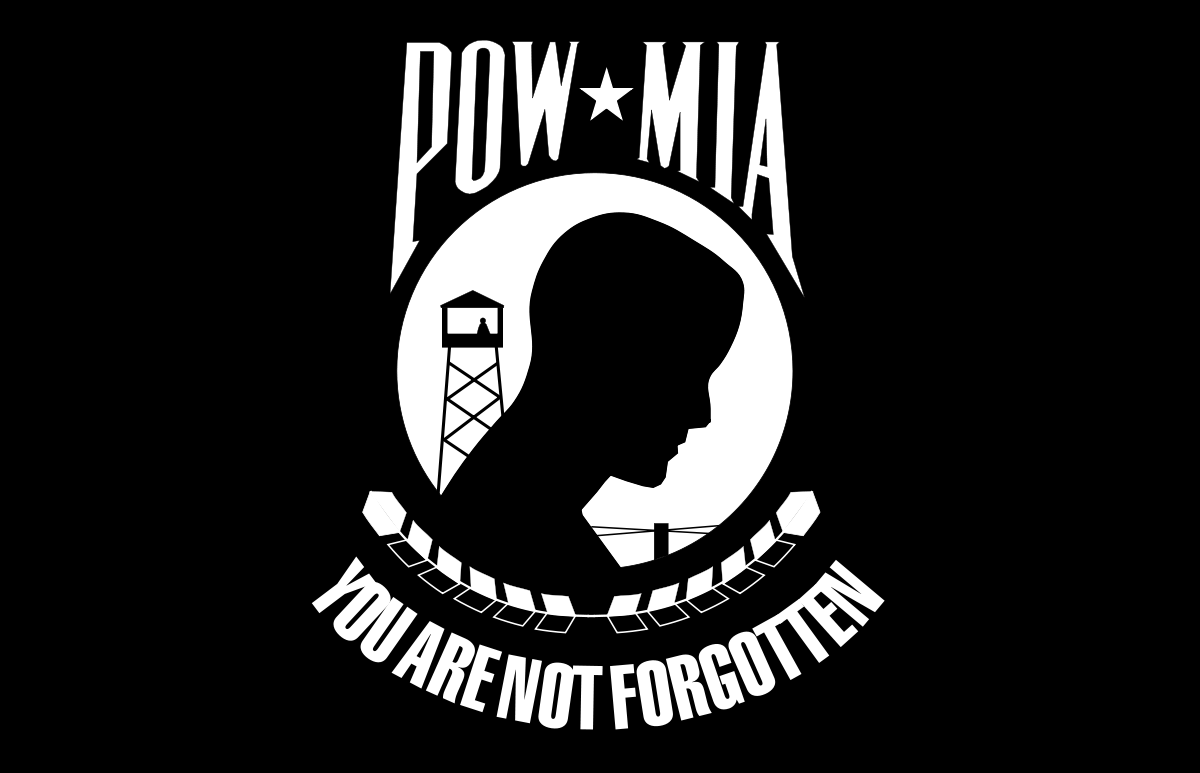 Following the League’s approval Annin manufactured the flags for distribution. The image was never copyrighted and is now part of the public domain. Later in 1982, the POW-MIA became a regularly flying flag over the White House along with the American flag. And so, the flag has come to be seen as a symbol of a principle that doesn't just apply to those who fought and were lost in Vietnam, but to all members of the U.S. armed forces serving their country abroad. Let the slogan “You are not forgotten” live on today as National POW/MIA Recognition Day and every day as we remember those service men who have fought and were lost in battle and to all of the United States armed forces serving abroad.
Following the League’s approval Annin manufactured the flags for distribution. The image was never copyrighted and is now part of the public domain. Later in 1982, the POW-MIA became a regularly flying flag over the White House along with the American flag. And so, the flag has come to be seen as a symbol of a principle that doesn't just apply to those who fought and were lost in Vietnam, but to all members of the U.S. armed forces serving their country abroad. Let the slogan “You are not forgotten” live on today as National POW/MIA Recognition Day and every day as we remember those service men who have fought and were lost in battle and to all of the United States armed forces serving abroad.
National Grandparents Day

The first Sunday after Labor Day marks National Grandparents Day in the United States, a day to honor grandparents and the roles they play in our lives and society and to let them show their love for their grandchildren. Grandparents are the protectors of guidance to our societies as the elders embodied with wisdom, which is also an aim of this day to pass on the older generation’s knowledge to the younger. Inspiration behind Grandparent’s Day came from multiple influences like Marian Lucile Herndon McQuade, through educating people about the important contributions senior citizens make in society while highlighting the plight of lonely elderly people in nursing and care homes.
Another big proponent of a push for a day to honor the elderly came from Michael Goldgar. After visiting his aunt in a skilled nursing home, he began lobbying efforts spending $11,000 of his own money to make the day officially recognized which included more than 15 trips to Washington D.C. over a seven year span to meet with legislators. After years of trying to accomplish this day to honor and commemorate elders, National Grandparents Day was signed into law by former President Jimmy Carter in 1978. A presidential proclamation on September 6, 1979, made this day official – designating the first Sunday of September following Labor Day as National Grandparents Day. Every year thereafter, the president is requested to issue the proclamation to designate the day and to call on people, groups, and organizations to observe this day with appropriate ceremonies and activities.
Since the designation of this day, National Grandparents Day has an official song “A Song for Grandma And Grandpa” by Jonny Prill and even an official flower, the “forget-me-not” flower. Other symbols of this day are the way many people honor their grandparents through a range of activities like gift giving, card-giving, precious time spent, or as simple as a lunch or dinner date. Other great ideas to symbolize this day include spending time learning about your grandparents or an elderly’s in your community heritage and history or even making family trees. Or simply listening to stories or volunteering at a nursing home for the day. Whatever idea or activity that you come up with will surely warm the hearts and be appreciated in the eyes of the elderly. Let us all be reminded and give thanks to the special grandparents and elderly in our communities and the great wisdom and love they have to share.
Patriot Day Commemoration Flag of Honor and Flag of Heroes
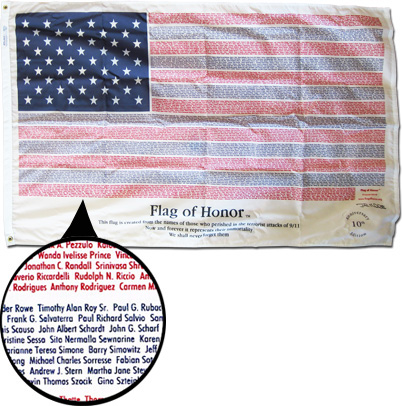
It’s hard to believe that the largest attack on American soil was just 16 years ago early morning September 11, 2001. After 19 terrorist using four hijacked commercial air jetliners as guided missiles imploded the Twin Towers of the World Trade Center in New York City and flown into the center of our government (the Pentagon in Washington D.C.) killing a sorrowing 2, 977 innocent people. I personally remember walking into my political science classroom in high school and feeling the eerie quietness as I realized my teacher was watching live news in what seemed to be an accident. After the bell sounded for class almost as if the bell itself had been a cue, another plane came crashing in Tower number 2 on live television. Immediate screams echoed the hallways followed by a sombrous quietness that left the school including my classroom immobilized with fear. At first, like most, we all thought the first plane crash in to Tower 1 was a shear accident or mishap of some sort but after plane number 2 came in on the war path we all surely knew this was no accident and that our beloved America was under attack. Just like that, America was suddenly vulnerable and the birth of terrorism on our soil was clear.
Since the attack, we have confronted and dealt with our newfound fear on terrorism. We have deployed the Patriot Act, tightened up homeland security, sanctioned more rigid regulations on TSA and flying, and fought an ongoing war for over a decade against these acts of terror. Are we safer? Yes, safer from orchestrated attacks, the kind that shock our nation on that September morning. It’s now much harder for terrorist to get into the country and if they do even harder for them to pull off something like 9/11. We have done a great job at stopping terrorist before they strike. But what has really converted our fears of safety into strength through this all?
We have faced attack on the homeland, faced conflict in the far corners of the earth, faced devastating and catastrophic natural disasters, and one thing that always remains is our hope and strength as a nation when faced with opposition. The many servicemen and women who courageously put their lives on the line when called upon, the volunteers who provide aid when disaster strikes, our military personnel who valiantly protect us and our borders, and our leaders who position our country’s resilience and success. All of this comes at the expense of those who have sacrificed and put our country before their own interest. It would be a disservice if we didn’t mention all of these admirable people that have helped our country in times of need and challenge. It would be even more of a disservice if we didn’t stop for a moment and give thanks to these people but also to commemorate in remembrance of those who were injured or died during the attacks on September 11th, 2001.
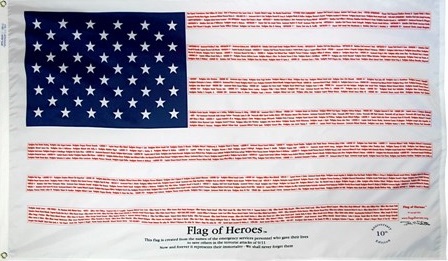
Let us be reminded especially today, how far we have come as a nation since 2001 but also let us never forgot the innocent and brave who died during these atrocious acts. 9/11 will always be remembered as one of the most violent attacks of terror this world has ever seen but equally it will be remembered for all the many people who pulled together to restore hope in a city and a nation. Annin Flagmakers was chosen to be the official flag make for the “Flag of Honor and Flag of Heroes Project”. These flags have been created with the sincerest intentions of honoring the victims. The goal is to immortalize each individual victim, to give comfort to the families left behind by knowing that their loved ones will be forever honored and remembered and to create an enduring symbol, recognized by the world, of the human sacrifice that occurred on that day in 2001. Proceeds from the sale of the flags go to several charities including the Voices of 911 (supporting the families of the victims), the Cantor Fitzgerald fund, the National 911 Museum at Ground Zero Flag of Honor Fund, the USO and the Wounded Warrior Project.
National Airborne Day by Senate Resolution 235 of the 111th Congress
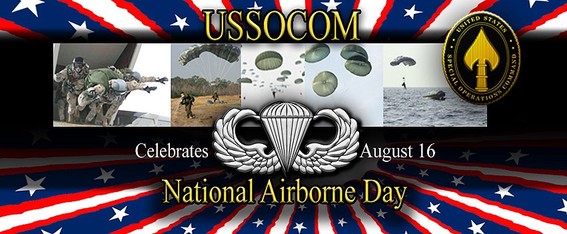
National Airborne Day is observed August 16th each year to commemorate the nation’s airborne divisions of the Armed Forces. Airborne forces of the Armed Forces have a longstanding and honorable history that dates back to 1940, as units of hardy and fierce warriors who defend the national security of the United States and our allies. These adventurous units project effective ground combat power to the battlefield afar and to the corners of the world for our peace and freedom. The Department of War first authorized the Army Parachute Test Platoon to start this innovative training in June of 1940. With two officers and 48 enlisted volunteers from the 29th Infantry Regiment in July 1940, training began in Fort. Benning, Georgia to become Airborne Infantrymen with the goal of inserting ground combat forces behind a battle line.
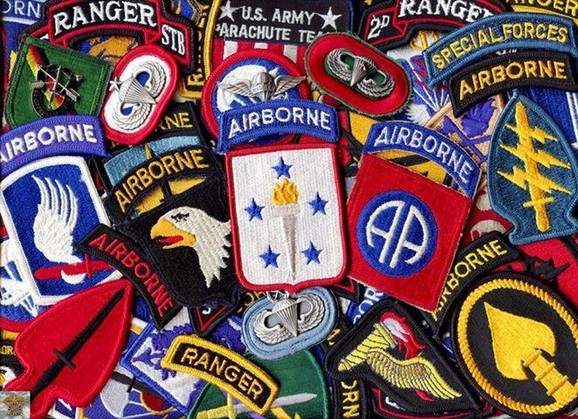 Just two short months later on August 16, 1940, the brave volunteers proved their test jump to be successful; jumping from a Douglas B-18 over Lawson Army Airfield and birthing the Airborne forces including the 11th, 13th, 17th, as well as the famous 82nd and 101st Airborne Divisions. Shortly after the test jump the United States Airborne forces entered into World War II, and since have fought in Korea, Vietnam, Panama, the Persian Gulf region, and Somalia as well as other peacekeeping operations. Modern airborne forces include elite forces composed entirely of airborne trained and special operations warriors, including Army Special Forces, Navy SEALs, Marine Corps Reconnaissance units, and Air Force combat control teams, each of which is part of the United Stated Special Operations Command.
Just two short months later on August 16, 1940, the brave volunteers proved their test jump to be successful; jumping from a Douglas B-18 over Lawson Army Airfield and birthing the Airborne forces including the 11th, 13th, 17th, as well as the famous 82nd and 101st Airborne Divisions. Shortly after the test jump the United States Airborne forces entered into World War II, and since have fought in Korea, Vietnam, Panama, the Persian Gulf region, and Somalia as well as other peacekeeping operations. Modern airborne forces include elite forces composed entirely of airborne trained and special operations warriors, including Army Special Forces, Navy SEALs, Marine Corps Reconnaissance units, and Air Force combat control teams, each of which is part of the United Stated Special Operations Command.
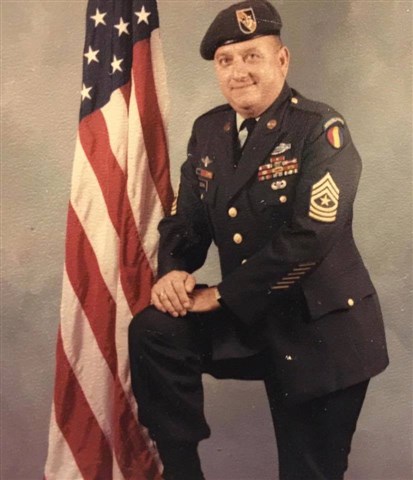 My grandfather was a paratrooper who valiantly and fiercely served this great nation. He was proud of the life he was able to achieve earning the right to wear the “Silver Wings of Courage.” After talking to him only once about his experience, he told me that he never thought that he would have the life he has now when he was only 18 years young, weighing 120 pounds (at the time), and jumping out of an airplane. He retired as an E9 Sergeant Major in the United States Army Special Forces after serving for 30 years. He has since passed away but his “wings” still carry him high in the heavens above and he will always be remembered by many.
My grandfather was a paratrooper who valiantly and fiercely served this great nation. He was proud of the life he was able to achieve earning the right to wear the “Silver Wings of Courage.” After talking to him only once about his experience, he told me that he never thought that he would have the life he has now when he was only 18 years young, weighing 120 pounds (at the time), and jumping out of an airplane. He retired as an E9 Sergeant Major in the United States Army Special Forces after serving for 30 years. He has since passed away but his “wings” still carry him high in the heavens above and he will always be remembered by many.
Members and former members just like my grandfather of the United States airborne forces are all members of a proud and honorable fraternity of combat parachutist. These units have served with distinction and success in armed hostilities and protected our freedom on the furthermost corners of the world. It is safe to safe that the airborne units represent some of the most adventurous and effectively trained air-assault units in all of the Armed Forces. Be sure to thank a paratrooper on National Airborne Day! In ending, a powerful excerpt from Senate Resolution 235 reads below:
"Whereas, since the airborne community celebrates August 16 as the anniversary of the first official jump by the Army Parachute Test Platoon, August 16 would be an appropriate day to recognize as National Airborne Day: Now, therefore, be it."
